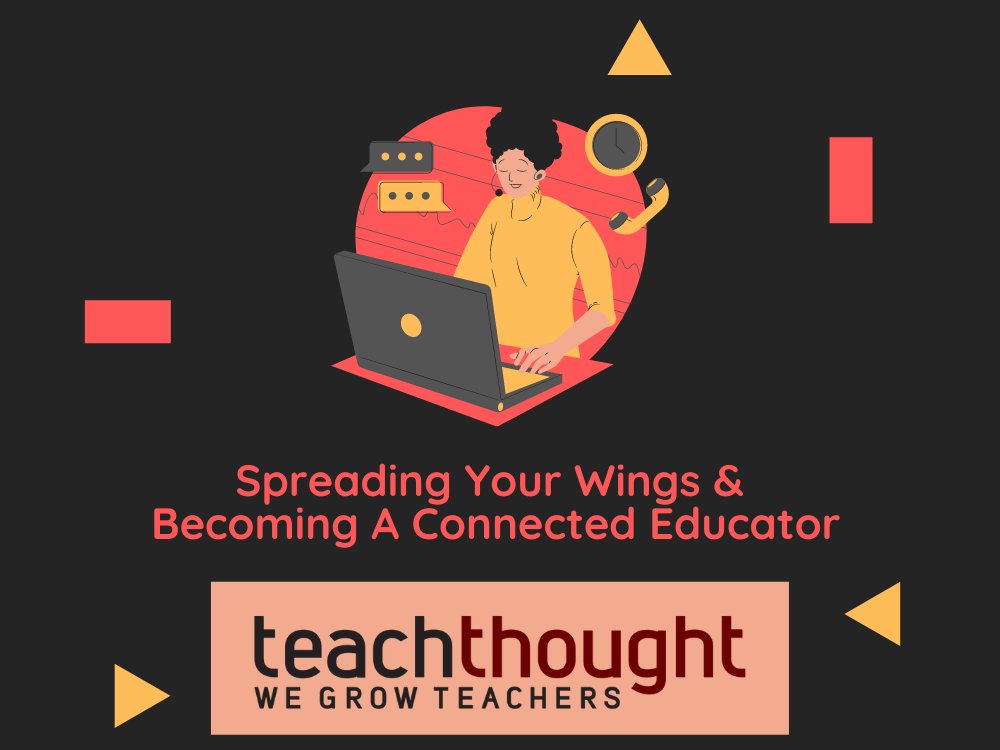
How To Spread Your Wings And Become A Connected Educator
by Mike Fisher, The Digigogy Collaborative
I plugged into the internet in a focused way around 1994. Prior to that, I had dabbled in email not for communication’s sake but because it was a course requirement to email an assignment to my professor. 1994 was the first time I remember actually logging onto the internet for the sake of discovery. Back then, I printed everything of value that I came across. I used to have reams of paper stuffed into binders with all the information I was finding online.
After a few years of logging on simply to access information, the Web 2.0 tide started to shift from information access to information interaction. The new imperative was to do something with the information I was finding: remix it, visualize it, connect it, express myself with it, etc. The task became creating a new recipe with the existing ingredients.
After a few more years, the next shift was towards contribution. Now that I’ve filtered the information and done something new with it, I need to share it. And thus, we’ve reached the overarching purpose of this blog post. With that in mind, here are four steps to spreading your wings, beyond the walls of your own school, and becoming a Connected Educator:
1. Plug in
Blogging, tweeting, commenting on digital resources, etc. Go beyond lurking and become a contributor. See this infographic for degrees of connectedness… Go even further and participate in an established group: Nings such as The Educator’s PLN or Classroom 2.0, #Hashtag #Chats #OnTwitter, ASCD EDge groups, Facebook pages, or anywhere else you can find value.
2. Make it official
Now is the perfect time to put social media to good use, as October is Connected Educator Month. Millions of educators the past two years have participated in hundreds of PD events and opportunities, and this year will be even bigger. Check out the calendar here or dive right into resources from ASCD, NCLE, and others.
3. Attend an EdCamp unconference
From the EdCamp Website: Edcamp is a form of unconference designed specifically for teachers and their needs. What makes Edcamp an unconference? Unlike traditional conferences which have schedules set months in advance by the people running the conference, Edcamp has an agenda that’s created by the participants at the start of the event. Instead of one person standing in front of the room talking for an hour, people are encouraged to have discussions and hands-on sessions. Kristen Swanson wrote a great article about it here in Educational Leadership. All of the space and time are reserved for the things the people there want to talk about.
4. Connect your school or classroom immediately…
…to another one somewhere in the world. BIG FUN Education’s Reading Without Borders, Skype in the Classroom, and Around the World with 80 Schools are good places to start.
These will help you start to build your Digital Personal Learning Network (DPLN). There is nothing more important for today’s educator than to participate, in some way, with online entities that could potentially impact every student you teach.
In this day and age, you can’t be an effective educator without being a connected educator. This is your challenge. This is your charge. The moment you finish this blog post–connect. Plug into the system that has been awaiting your expertise and experiences and let it guide you to a new realm of collaborative impact.
Your students deserve it and so do you.
Michael Fisher is a former teacher who is now a full-time author, consultant, and instructional coach. Michael is the author ofDigital Learning Strategies: How do I assign and assess 21st Century Work? and the co-author of Upgrade Your Curriculum: Practical Ways to Transform Units and Engage Students, both published by ASCD. His latest e-book is Exploring the Close Reading Standard: Ideas and Observations; Becoming A Connected Educator; image attribution flickr user vancouverfilmschool
